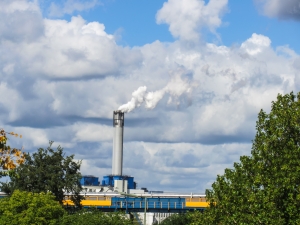Major Contaminants That Contribute to Land, Water, and Air Pollution
Download Audio VersionThe main sources of environmental pollution are contaminants and pollutants that are released as a result of the extraction and processing of raw materials, production, traffic, and other human activities. The problem is that they are non-biodegradable, destroy the habitat and biosphere, and are transferable.
Types of Pollution
The main types are diffuse and point source, the latter being waste released from fish farms, landfills, power stations, and industrial plants. Basically, sources that are identifiable, whether a ditch or a pipe, fall in this category. Automobile and chemical manufacturers, pulp mills, and oil refineries often release more than one harmful compound. Some plants and facilities discharge pollutants directly into the air, land, rivers, oceans, and other water bodies. Then there is diffuse pollution that occurs when contaminants are released as a result of commercial and industrial activities such as forestry, farming, and construction. Harmful chemicals are dispersed over a large area. The discharge of pesticides, herbicides, and contaminants from the road system into ground and surface waters are considered sources of diffuse pollution.
Major Contaminants

Contaminants can be divided into settleable and suspended solids, heavy metals, pesticides, hydrocarbons, and pathogens. Nutrients are also in the category of pollutants because they are produced as a result of fuel burning, silage, decomposition of organic matter, and other processes. Industrial plants are the main source of heavy metal pollution and are toxic to plant and animal species and humans. Pesticides come in the form of fungicides, insecticides, and herbicides that are used to eliminate weeds, insects, and others. They are used in road maintenance, agriculture, and other activities. Then there are POPs or persistent sources of pollution. These are compounds and harmful chemicals that accumulate in cells and tissues and can cause damage in the long run.
In general, power generation plants, soil cultivation and pesticide use, fertilizers, and other agrochemicals, as well as waste recycling are diffuse sources of pollution. Fish farms and oil storage sites are point sources. There are also processes and sites that are both point and diffuse sources. Examples include mining sites, contaminated land plots, farming waste, and others.
Types of Pollution
Pollution can be divided into air, noise, radiation, pesticide, thermal, and water pollution. The latter refers to the discharge of biological and physical matter and chemicals into the ocean and fresh water bodies. Chemical compounds, heavy metals, and other toxic substances are introduced into water. There are non-conventional and conventional pollutants. Examples of the former are organic carbon compounds, toxic and nontoxic metals in particulate and dissolved form, and others. Land and soil pollution are serious problems and the main causes are the accumulation of solid waste and soil misuse. Chemicals used to control insects, pests, bacteria, earthworms, and other organisms contribute to pesticide pollution and low soil quality. Another problem is that higher forms of life such as birds, shellfish, algae, and animals prey on pests, insects, etc. There is also radiation pollution that can be attributed to different sources, from nuclear plants to research laboratories, mining sites, and others. Genetic mutations and damage are a source of concern. Radiation poisoning is also associated with cancer and other chronic health problems.
Biodegradable vs. Non-Biodegradable
Pollutants can be divided into biodegradable and non-biodegradable meaning that some substances cannot be decomposed by bacteria and other living organisms. Thus they can persist for hundreds and thousands of years. Examples of non-biodegradable substances and products include radioactive chemicals, glass, and plastics. PC hardware, tin cans, and synthetic materials are also on the list of non-biodegradable waste. Soil, climate conditions, moisture, and air cannot break them down when released into the environment. Thus they are a major threat to the environment. To illustrate the case, a plastic 6-pack ring will decompose in about 450 years while an aluminum can – in about 350 years. A baseball bat made from wood decomposes in about 20 years, and a banana peel will break down in just 2 months. Glass bottles, car tires, and items made from polystyrene foam are examples of waste that takes a very long time and is virtually non-biodegradable.
Related Articles
Eco-Friendly Vehicles for Fuel Savings and Green Lifestyle
Eco-friendly cars use alternative fuels and electricity and come with different fuel-saving features. Customers can choose from an array of different automobiles such as hydrogen hybrid, hydrogen fuel cell, and diesel hybrid. Manufacturers aim to produce affordable, reliable, and serviceable...


